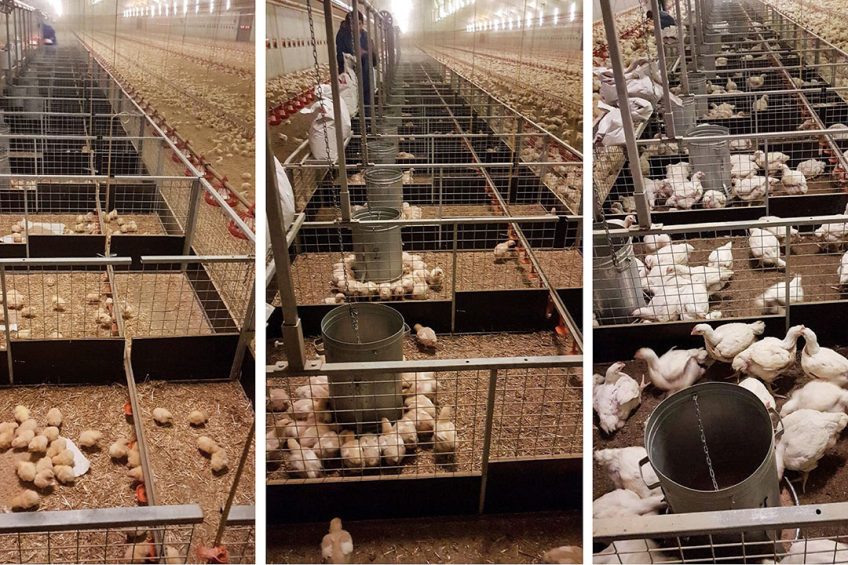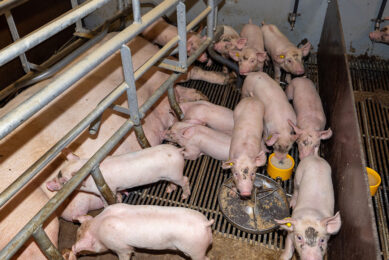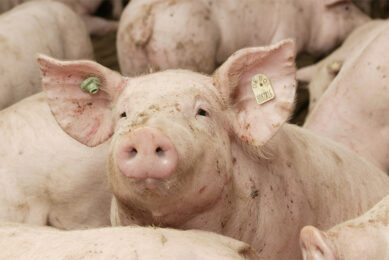Mitigating chronic gut inflammation in animal production

Inflammation is a complicated physiological process in response to various immune stimuli. This physiological reaction can become detrimental when the response is prolonged and dysregulated called “chronic inflammation”. A notable feature of chronic inflammation is its high energetic cost.
It is well established that the chronic (low-grade) inflammatory response in the intestine, results in the disruption of digestive function, nutritional malabsorption, and consequently growth retardation. Research has demonstrated that pro-inflammatory pathways promote muscle catabolism to supply amino acids and energy substrates for immune responses. These shifts in systemic metabolism may also explain the detrimental effects on performance and carcass traits commonly associated with chronic inflammation which results in economic losses.
Real conditions
A holistic approach that demonstrates several, complementary modes of action is necessary for overall protection against chronic inflammation. In our research, first, we established successfully, a ‘chicken chronic gut inflammation model’ under real production conditions. Then, we succeeded to alleviate this by a powerful synergistic formula that acted on several levels. Lumance (Innovad, NV/SA Belgium) is a complex formula, combining slow release and protection technologies ensuring that fatty acids, essential oils, plant extracts, and anti-inflammatory compounds and polyphenols are delivered in a gut active way.
In our research, we are aiming to study the impact of this product on:
- Anti-inflammatory and Antioxidant activity both at gut tissue (cytoprotective) and blood (systemic) level
- Gut barrier function
- Immunomodulation (both cytoprotective and systemic) and
- (immune)-Metabolic modulation.
To provide a challenge, in the present experiment, a high amount of wheat and rye with no coccidiostats and NSP hydrolysing enzymes were used in any of the experimental diets. The experiment is a completely randomised design of treatments with Lumance at 3 different concentrations (0, 1, and 2 kg/ton) in the feed. Growth parameters were determined during the experiment and the anti-inflammatory effect of the dietary treatments was measured by the jejunal level of the pro-inflammatory cytokine (Interferon-gamma (IFNγ)), and as well as that of Malonylaldehyde (MDA) on day 28 with the immune and biochemical assays.
A total of 540 male broiler chickens (Ross 308), aged 1d old, of similar mean body weight vaccinated for Newcastle disease, were used in this study. The effects of the 3 dietary treatments on BW, FI, and FCR are summarised in Table 1. Overall, Lumance linearly enhanced BW significantly at 35d. Supplementation of Lumance with 1 and 2 kg/ton increased the body weight of broilers by 3.6 % and 6 % respectively, compared to the control. Concerning the feed conversion ratio over 0–5 weeks, treated chicks significantly improved the FCR. Regarding the feed intake, no differences were observed between the treatments over the 5 weeks. Mortality was not significantly associated with treatment but was mostly associated with the typical symptoms of coccidiosis.
Figure 1A – Regression analysis of the intestinal pro-inflammatory cytokine IFN-γ of broilers fed with a feed challenged diet* containing different doses of Lumance.

Immune response
It is well established that stress regardless of its origin or nature leads to inflammation and the release of pro-inflammatory cytokines. Cytokines activate immune cells and have a profound detrimental effect on growth performance. It was shown that broilers consuming wheat and rye-based diet for 20 days increased the systemic level of pro-inflammatory cytokine (IFNγ) which contributed to an increase in inflammation. Non-starch polysaccharides, together with resistant starch and lignin, form the whole of dietary fibre of wheat and rye, has been reported to exhibit multiple biological functions that can induce intestinal chronic inflammation. Our preliminary findings show that the intestinal concentration of the pro-inflammatory cytokine Interferon-gamma (IFNγ), was significantly affected by the dietary treatments. Treated birds exhibited a lower pro-inflammatory cytokines IFNγ at d 28 compared with none supplemented birds (Figure 1A). These results are consistent with what we expected from its anti-inflammatory activity and it is well correlated with our previous in-vitro finding. Reduction in cytokine synthesis during inflammation is thought to be a major mechanism by which this complex reduces inflammation. Malondialdehyde is a lipid peroxidation product, and. MDA content can, therefore, be an indicator of membrane injury and oxidative stress. ROS-induced lipid peroxidation triggers inflammation and generates cytokines. For malondialdehyde (MDA), a linear decrease in jejunal expression was found in treated chicks compared to the control group (Figure 1B).
Figure 1B – Analysis of Linear regression of the intestinal malondialdehyde MDA of broilers fed with a feed challenged diet* containing different doses of Lumance.

Ongoing work
In conclusion, Lumance could reduce the chronic intestinal inflammation and counteract the synergistic and additive negative impact of several stress factors, typically seen in the field. However, there is a clear need to identify other biomarkers of intestinal inflammation. Our work is ongoing and we are aiming to test and look at other important intestinal biomarkers.
Author:
Alireza Khadem, Research and Technical Manager Poultry, Innovad
 Beheer
Beheer





 WP Admin
WP Admin  Bewerk bericht
Bewerk bericht